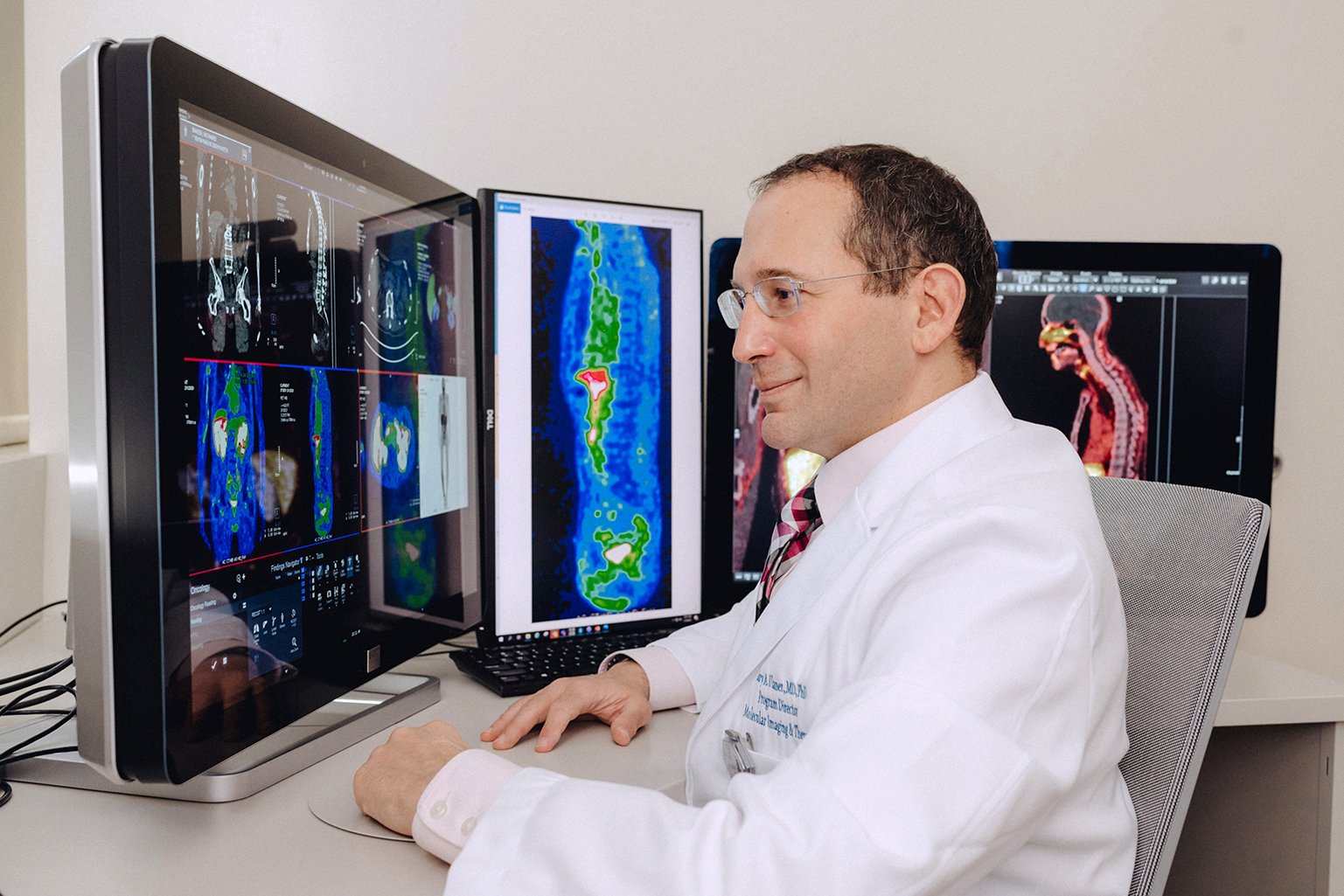With support from philanthropy, the latest breast cancer imaging and treatment options are elevating women’s health care at Hoag and beyond.
Thanks to support from philanthropy, two recent studies conducted at the Hoag Family Cancer Institute are significantly advancing breast cancer care for women in Orange County and around the country.
Led by Dr. Gary Ulaner, James & Pamela Muzzy Endowed Chair in Molecular Imaging and Therapy and director of Molecular Imaging and Therapy at Hoag, both trials used novel medications that bind to specific molecules on breast cancer cells and emit radiation to detect or treat cancer. Because these medications only bind to cancer cells and not normal cells, physicians can successfully target cancer while minimizing damage to healthy cells. Results from each trial were published in prestigious medical journals and represent a groundbreaking step in breast cancer care and the field of precision medicine more broadly.
“At Hoag, we are dedicated to pushing the boundaries of what is possible in cancer treatment and ensuring that our patients receive the best care available,” said Dr. Ulaner.

Dr. Gary Ulaner, James & Pamela Muzzy Endowed Chair in Molecular Imaging and Therapy
Estrogen Receptor-Targeted PET/CT Scan for Breast Cancer Imaging
Breast cancer, especially when advanced or recurring, requires precise imaging to determine how far the cancer has spread throughout the body. Physicians currently use one of two types of scans to make this determination: a CT or an FDG PET/CT scan.
Researchers at Hoag, however, published a new test called Fluoroestradiol (FES) PET/CT for more accurately detecting the extent of breast cancer and potentially reducing false positives and unnecessary biopsies. The FES PET/CT does this by using a special radioactive material that binds to the estrogen receptors found on roughly 80% of breast cancers.
Novel Imaging and Therapy Techniques Open New Doors for Breast Cancer Patients
Patients battling advanced stages of breast cancer can find hope for more effective and personalized treatment thanks to another innovative molecular imaging and therapy technique designed to target a more uncommon type of breast cancer receptor known as somatostatin receptor 2 (SSTR2). The trial first used this technology to image patients and detect breast cancer cells with the SSTR2 receptor, then used powerful molecularly targeted radiation to kill the cancer. Patients enrolled in the trial showed reductions in disease after therapy, and the method is now being advanced in larger trials, hopefully leading to the approval of a new therapy for metastatic breast cancer.
Sign up for our Newsletter